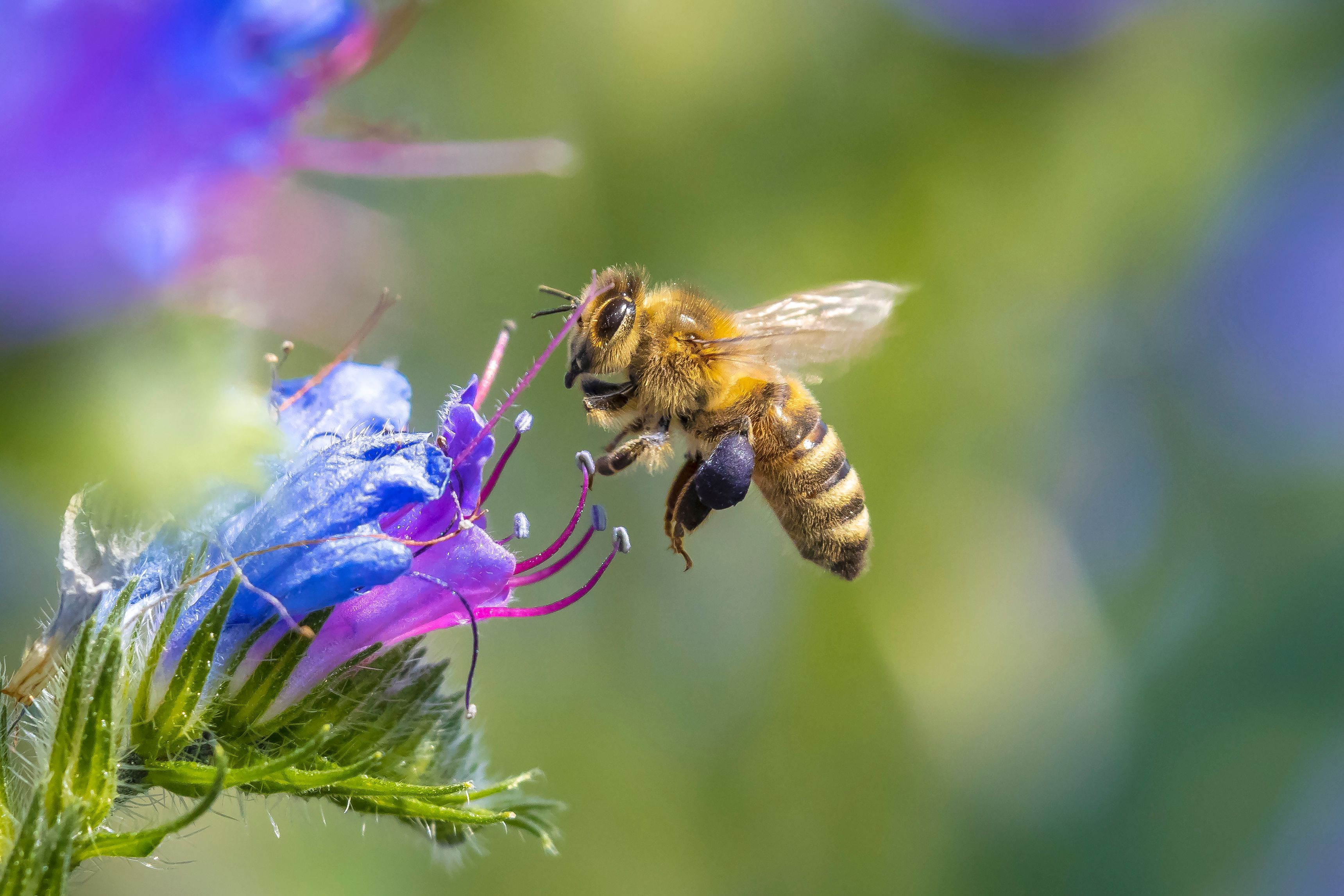Alarming honeybee colony losses across the US are confirmed
The economic impact is estimated to surpass $600 million in honey production, pollination income, and costs to replace colonies
Photo: Sander Meertins/Adobe Stock

Earlier this year, a nationwide survey of beekeepers revealed “catastrophic” losses in honeybee colonies throughout the United States.1 Newly analyzed data has recently confirmed these losses, with commercial beekeepers reportedly losing an average of 62% of their colonies, amounting to the loss of 1.6 million colonies between June 2024 and March 2025.2
The survey, conducted by Project Apis m., a nonprofit that supports honeybee and beekeeping community research, gathered data from 842 beekeepers, representing approximately 1.956 million colonies. These survey participants account for about 72% of bees in the country.
Causes of these high losses in honeybees remain unknown, but the economic impact of the 1.6 million colonies lost is estimated to surpass $600 million in honey production, pollination income, and costs to replace colonies. “Collectively, these economic and biological hurdles will likely make it impossible for beekeepers to rebuild, pollinate, and produce a honey crop this year, which could have continued impacts on beekeeping operations and our nation’s produce supply,” wrote the Honey Bee Coalition in a news release.2
According to the coalition, the full impact of honeybee shortages on pollinated crops, including almonds, apples, cherries, blueberries, melons, and pumpkins, and many others, is yet to be determined. The organization warns that these losses could result in lower farmer yields, create higher prices and limited availability of honey in grocery stores, and have other effects on these cropping industries worth more than $18 billion each year.2
Surpassing the typical 30% to 50% average annual honeybee losses reported by beekeepers, these recent losses exceed historical trends.2,3 “In January 2025, beekeepers across the country began reporting unexpected large-scale honeybee losses—we now know the largest ever recorded in the US,” said Danielle Downey, executive director of Project Apis m., in a news release.2
“In response, USDA Bee Labs were among the first to receive reports of these severe losses. To address the crisis, a multi-organizational working group—including Project Apis m., the American Beekeeping Federation, and the American Honey Producers Association—swiftly mobilized to assess the scale and severity of the losses, collect critical management data, and guide research efforts to identify potential causes,” Downey continued.2
Findings from the survey include2:
- Hobbyist beekeepers, accounting for 1-49 colonies, lost an average of 51% of their colonies
- Sideliner operations, comprising 50-500 colonies, lost an average of 54% of their colonies.
- Commercial beekeepers with more than 500 colonies lost an average of 62% of their colonies, marking a shift from typical patterns where larger operations usually experience fewer losses due to their scale, resources, and skilled management practices
Researchers with the US Department of Agriculture’s Agricultural Research Service (USDA-ARS are currently analyzing field samples from 114 colonies in California, both failing and surviving colonies, to investigate causes of the higher colony losses. The investigation includes pathogen screening, examination of stored pollen for pesticide residue and pollen diversity, and microbiome and host-pathogen interactions that may be linked to colony health.
A laboratory at Cornell College of Agriculture and Life Sciences is also conducting pesticide residue analysis on bees, wax, pollen, and honey samples from affected colonies. Other university labs throughout the US along with the USDA-ARS are also looking into potential additional factors contributing to losses, including2:
- Varroa mite resistance to amitraz, a broad-spectrum acaricide and insecticide used to manage varroa mites
- Environmental factors that affect colony health, such as weather conditions that can decrease availability of nectar and pollen or limit foraging conditions
- Honeybee exposure to chemicals like pesticides, which can instantly kill honeybees or lead to sublethal effects like impaired memory and learning, decreased foraging, and shorter lifespans
According to Michigan State University, although fungicides are developed for the management of fungi, many fungicides can have long-term effects on bees. Moreover, when certain combinations of pesticides are applied simultaneously, their toxicity to bees increases more than if the pesticides were applied separately. Inactive ingredients in pesticides, like adjuvants, can also be harmful to bees.3
“Beekeeping businesses are facing unprecedented challenges that threaten their survival from colony losses we haven’t seen in nearly 20 years. The swift response from stakeholders and the USDA is critical in providing beekeepers with the data and information to make well-informed decisions to sustain their operations,” said Patty Sundberg, president of the American Beekeeping Federation, in a news release.2
References
- Survey reveals over 1.1 million honey bee colonies lost, raising alarm for pollination and agriculture. News release. Honey Bee Health Coalition. February 20, 2025. Accessed April 24, 2025. https://honeybeehealthcoalition.org/survey-reveals-over-1-1-million-honey-bee-colonies-lost-raising-alarm-for-pollination-and-agriculture/
- New data confirms catastrophic honey bee colony losses, underscoring urgent need for action. News release. Honey Bee Health Coalition. April 3, 2025. Accessed April 24, 2025. https://static1.squarespace.com/static/650342507631075013d25a2c/t/67eed76409b99b1e0706b8e8/1743705957725/04_03_2025%2BUpdated%2BColony%2BLoss%2BPR.pdf
- Heck A. Reports of high honey bee colony losses and how farmers and growers can support honey bees. Michigan State University Extension. April 1, 2025. Accessed April 24, 2025. https://www.canr.msu.edu/news/reports-of-high-honey-bee-colony-losses-and-how-farmers-and-growers-can-support-honey-bees?utm_content=&utm_medium=email&utm_name=&utm_source=govdelivery&utm_term=